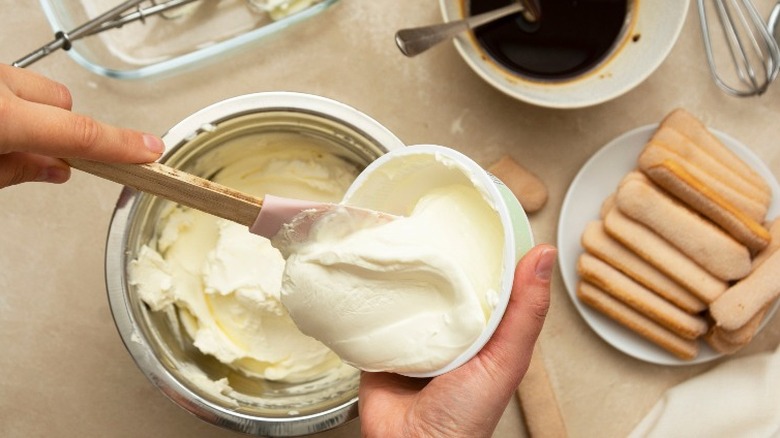What You Need To Know Before Substituting Solid Butter With Whipped
The ingredients prescribed in a baking recipe are determined by science, according to Physics World. Baking involves biology, physics, and chemistry. The element of biology comes into play when yeast causes dough to rise. Physics happens when gasses escape in the oven. Finally, chemical reactions occur in the oven when heat is applied to your ingredients.
Because baking involves different ratios of flour, fat, sugar, and eggs, making substitutions and altering the recipe is dangerous territory. You can certainly take shortcuts that will elevate your baking game, like soaking eggs in warm water to bring them to room temperature, per People. But it's important to know when cutting corners is permissible.
Per CNET, many apps and online programs exist if you need to make substitutions. But it's particularly hard to press on with a recipe if you find that you don't have the proper ingredients on hand. Butter plays a particularly key role in most baked items. If you find your fridge stocked with the whipped variety that you normally spread on toast, you can use it in place of solid sticks of butter.
Measure whipped butter by weight
Baking can be fraught with snafus. If you find yourself in a predicament without the sticks of butter you need to complete a project, there is one baking hack you need to know. It's possible to use whipped, spreadable butter instead, according to Challenge Butter. One eight-ounce tub of whipped butter equals about two ½ cup sticks of butter.
You must measure the whipped stuff by weight to make an equal substitution because it's full of air, per Recipe Tips. You wouldn't have the same amount of butter if you measured it by tablespoon.
You can also substitute margarine for butter at an equal ratio, provided it has at least 80% fat. Anything less is not a sufficient amount of fat. But, if you don't have either of these options on hand, reach for applesauce. It provides extra fiber, moisture, and all the fat you need.

